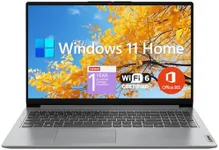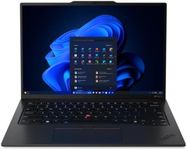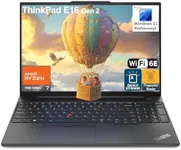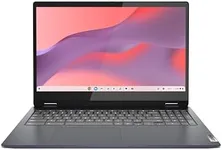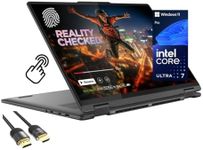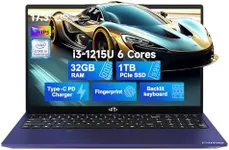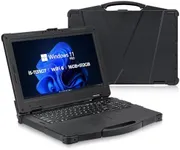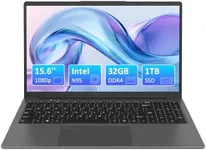Buying Guide for the Best Lenovo Laptops
When choosing a Lenovo laptop, it's important to consider your specific needs and how you plan to use the device. Lenovo offers a wide range of laptops designed for different purposes, from basic everyday use to high-performance gaming and professional workstations. By understanding the key specifications and how they relate to your needs, you can make an informed decision and select the best laptop for you.Processor (CPU)The processor, or CPU, is the brain of the laptop and determines how fast and efficiently it can perform tasks. For basic tasks like web browsing and word processing, an Intel Core i3 or AMD Ryzen 3 processor will suffice. For more demanding tasks like video editing or gaming, look for an Intel Core i5/i7 or AMD Ryzen 5/7. If you need top-tier performance for professional applications, consider Intel Core i9 or AMD Ryzen 9 processors. Choose a processor based on the intensity of the tasks you plan to perform.
Memory (RAM)RAM, or Random Access Memory, affects how many applications you can run simultaneously and how smoothly they operate. For basic use, 4GB of RAM is usually enough. For more intensive multitasking or running heavier applications, 8GB to 16GB is recommended. For professional-grade tasks like 3D rendering or large-scale data analysis, 32GB or more may be necessary. Consider your multitasking needs and the types of applications you use when selecting the amount of RAM.
StorageStorage determines how much data you can save on your laptop. There are two main types: HDD (Hard Disk Drive) and SSD (Solid State Drive). HDDs are cheaper and offer more storage space, but are slower. SSDs are faster and more reliable but tend to be more expensive. For general use, a 256GB SSD is a good starting point. If you store a lot of large files like videos or games, consider a 512GB or 1TB SSD. For a balance of cost and storage, some laptops offer a combination of SSD and HDD.
DisplayThe display size and resolution affect your viewing experience. Smaller screens (13-14 inches) are more portable and suitable for basic tasks. Larger screens (15-17 inches) provide a better viewing experience for media consumption and multitasking. Resolution is also important; Full HD (1920x1080) is standard and sufficient for most users. Higher resolutions like 4K (3840x2160) offer sharper images and are ideal for creative professionals. Choose a display size and resolution based on your portability needs and how you use your laptop.
Graphics Card (GPU)The graphics card, or GPU, is crucial for tasks that require rendering images, videos, and animations. Integrated graphics are sufficient for basic tasks and light gaming. For more demanding applications like video editing, 3D modeling, or gaming, a dedicated GPU (such as NVIDIA GeForce or AMD Radeon) is necessary. Entry-level GPUs are good for casual gaming and basic creative work, while high-end GPUs are needed for professional-grade tasks and high-performance gaming. Consider the graphical demands of your applications when choosing a GPU.
Battery LifeBattery life determines how long you can use your laptop on a single charge. If you need a laptop for travel or use in places without easy access to power outlets, look for models with longer battery life (8 hours or more). For home or office use where you can frequently charge the laptop, battery life may be less critical. Consider your mobility and how often you can charge your laptop when evaluating battery life.
Build Quality and DesignBuild quality and design affect the durability and aesthetics of the laptop. Lenovo offers a range of designs from sleek, lightweight models to more robust, durable ones. If you need a laptop for frequent travel, consider a lightweight and sturdy model. For home or office use, design may be more about personal preference. Think about where and how you will use the laptop to determine the importance of build quality and design.
ConnectivityConnectivity options include ports and wireless capabilities. Common ports include USB, HDMI, and headphone jacks. More ports provide greater flexibility for connecting peripherals. Wireless capabilities like Wi-Fi and Bluetooth are standard, but newer standards (Wi-Fi 6, Bluetooth 5.0) offer better performance. Consider the peripherals you use and the importance of wireless performance when evaluating connectivity options.
